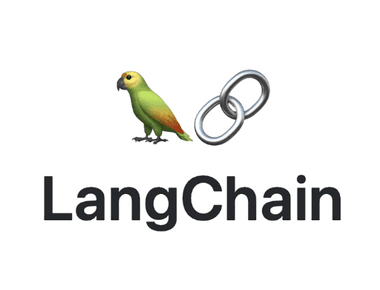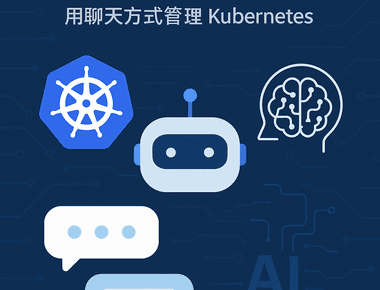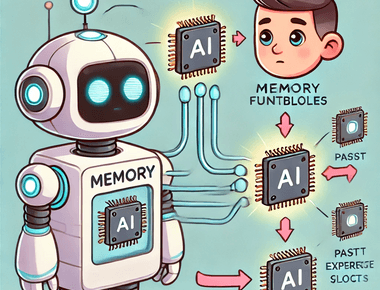

Vibe Coding 的興起與挑戰
隨著 AI 程式輔助工具的普及,許多開發者開始嘗試「Vibe coding」——也就是給 AI 一些簡單的描述或方向,讓它自動生成程式碼。雖然這種方式能夠快速生產新的程式碼,但在實際專案開發中仍有不少限制。
Vibe coding 的核心概念是透過自然語言描述需求,讓 AI 自動生成對應的程式碼。這種方法在原型開發、快速驗證想法時確實很有用,但在面對複雜的企業級專案時,往往會遇到各種挑戰。
1️⃣ 在既有複雜性上疊加功能是挑戰
AI 可以快速產生新的程式碼模組,但當需要把新功能整合進已有的複雜系統時,問題就會浮現。
具體例子:購物車折扣功能
問題所在:
- AI 沒有考慮到會員等級的不同折扣規則
- 忽略了商品類別的特殊折扣
- 沒有處理折扣上限限制
2️⃣ 冷門且複雜的新問題時,AI 經常答不上來
AI 的能力依賴於過往訓練資料,如果問題冷門或涉及全新概念,它往往無法提供完整解法。
3️⃣ 腦容量(Context)有限,難以處理超大型專案
再強大的 AI 也有上下文限制,能同時「記住」的程式碼量有限,超過後就無法全盤理解。
具體例子:大型電商網站
實際問題:
- AI 只能看到當前對話中的程式碼片段
- 無法理解模組間的複雜依賴關係
- 缺乏對整體架構的認知
4️⃣ 實作複雜功能時聯想力不足,容易「改 A 壞 B」
AI 在理解系統內部相依性時仍有不足,缺乏人類工程師能從經驗中建立的直覺。
具體例子:價格計算函式的修改
問題後果:
- 價格計算正確,但銷售報表資料不完整
- 統計報表出現錯誤
- 無法追蹤銷售數據
5️⃣ 記憶缺陷,難以重用已教過的方法
AI 在單次對話中能學習指引,但長期記憶不足,導致無法重用過往解法。
具體例子:陣列排序功能
今天再問類似需求時,AI 可能完全忘記,重新產生一個效率更差的版本。
6️⃣ 模型切換造成品質不穩
許多開發環境中,使用高階模型(例如 GPT-4.5)寫一部分程式碼後,為了省成本改用低階模型接續開發,結果程式碼品質大幅下降。
具體例子:用戶註冊功能
低階模型維護時可能產生的問題:簡化版本,遺漏重要檢查
7️⃣ 風格與設計不一致
除非明確告訴 AI 應遵循哪些架構原則和命名規則,否則每次產出的程式碼風格都可能不同。
具體例子:登入功能
第二次:使用類別式設計,風格完全不同的版本
上述問題部份可以透過Cursor 指南和 Copilot 指南解決
1. Cursor 使用指南
Cursor 作為基於 AI 的程式碼編輯器,能夠大幅提升開發效率,但需要正確的使用策略。
建立專案上下文檔案
檔案位置: 專案根目錄
檔名: .cursorrules
建立步驟:
- 在專案根目錄建立
.cursorrules檔案 - 複製上述範例並根據專案需求修改
- 儲存檔案後,Cursor 會自動讀取並應用這些設定
有效的 Cursor 提示技巧
2. GitHub Copilot 使用指南
GitHub Copilot 作為程式碼補全工具,能夠提供即時的程式碼建議,但需要正確的配置和使用方法。
建立 Copilot 設定檔案
檔案位置: 專案根目錄下的 .copilot 資料夾
檔名: settings.json
建立步驟:
- 在專案根目錄建立
.copilot資料夾 - 在
.copilot資料夾內建立settings.json檔案 - 複製上述範例並根據專案需求修改
- 儲存檔案後,Copilot 會自動讀取並應用這些設定
專案檔案結構總結
重要提醒:
.cursorrules和.copilot資料夾都應該加入版本控制- 這些檔案會影響團隊所有成員的 AI 工具行為
- 建議在團隊中統一這些設定檔案的格式和內容
Copilot 最佳實踐
3. 整合使用策略
建立開發工作流程
使用範例:
使用 Cursor 進行設計:
- 描述功能需求
- 提供程式碼上下文
- 指定架構模式
使用 Copilot 進行實作:
- 在檔案中編寫程式碼
- 利用註解引導
- 接受或拒絕建議
使用 Cursor 進行優化:
- 重構程式碼
- 添加測試
- 確保品質
常見問題解決方案
結論
Vibe coding 雖然能夠快速生成程式碼、加速原型開發,但在面對大型專案、複雜邏輯、長期維護時,AI 仍難以完全取代工程師,人類工程師能夠全盤理解系統架構、具備長期記憶、解決未知問題並保證程式風格一致,這些都是當前 AI 仍無法完全做到的。
透過正確使用 Cursor 和 Copilot 等 AI 工具,開發者可以大幅提升開發效率,但關鍵在於建立正確的使用策略和工作流程,讓 AI 成為工程師的得力助手,而不是完全依賴的替代品。
Related Posts








